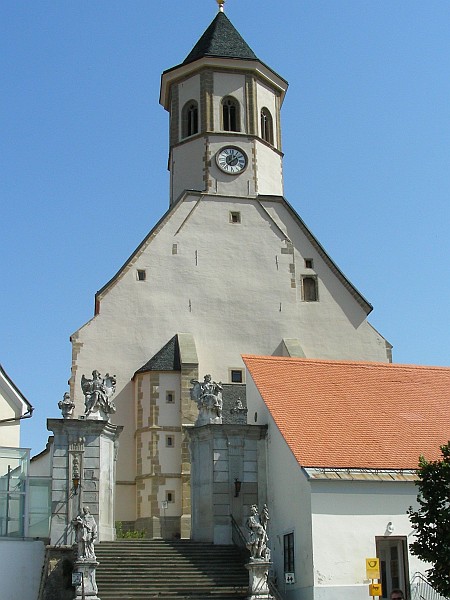
On the road leading toward the historic town of Ptuj, not far from the Dravinja river, a hilltop church frequently captures the attention of passers-by. Churches perched on hills are a common sight across Slovenia, but the Ptujska Gora church, as it is known across the country, was built in the gothic rather than the more familiar baroque style. Inside, it is even more special, with unusually ornate furnishings serving as evidence of its long and unusually interesting history.
According to a local legend, the history of the church began with a blind girl from a local family of nobles. For years, her entire family prayed that she would one day be able to overcome her disability. One day, their prayers came true when the girl suddenly saw a mysterious light and gained the gift of sight. The light had appeared on a nearby hill, and according to the legend, the girl’s grateful father had a church built on the spot to commemorate the miraculous event.
There is some truth to the legend, since the church does indeed have noble origins. It was built in the 14th century by a local family of nobles, possibly in gratitude for their safe return from a particularly bloody battle against the invading Ottoman Turks.
In the first decades of its existence, the church was destroyed by the Turks several times, but it was always rebuilt. Another legend stays that the Virgin Mary herself had protected the church by hiding it in a black cloud. Indeed, the church was long known as "Črna Gora" or "Black Mountain" before being renamed Ptujska Gora (meaning Ptuj Mountain), which is now the name of the village below.
After a series of renovations, the church emerged as an imposing, three-nave building, and soon became a popular pilgrimage destination. For several decades during the Reformation, it served as a Protestant church before being reclaimed by the Catholic Church. Finally, it was given to the Minorite Order in 1937.
Its most famous attraction is the main altar, which dates back to the late 15th century and features the Virgin Mary with a mantle carried by a large group of people – 82 in all. Many of the faces are representations of real-life historic personalities, including the nobles who supposedly founded the church and other local worthies. It is considered one of the finest altarpieces in Slovenia.
Today, Ptujska Gora still serves as an important destination for pilgrims, attracting some 60,000 visitors a year. Some come just to admire the view, which stretches all the way to the Pohorje Range to the north in good weather, and admire the area’s history. A building near the church is now the home of an extensive ethnological collection which provides a glimpse of how people once lived in this interesting but often-overlooked part of Slovenia.


































































